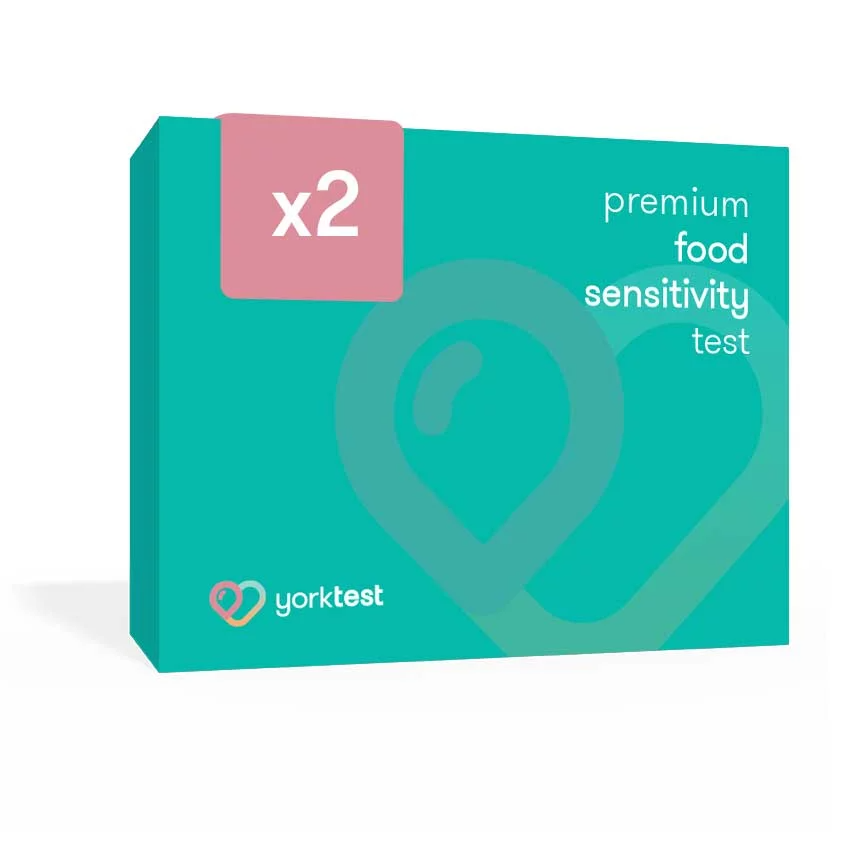
Pet Dander Allergy: Symptoms, Causes, Treatment, and Prevention
Pet allergies come in many forms and range widely in symptoms and reactions. An animal’s saliva, urine, and skin cells are all potential allergy triggers. Each contains specific proteins that can activate one’s immune system and cause adverse symptoms, be it a minor skin rash or a full-blown asthma attack.
The latter of these triggers, dead skin cells – otherwise known as pet dander – are the most common source of pet allergies. Furry animals like cats and dogs are the most common types of household pets that harbor dander. In turn, they are the most prevalent cause of animal-related allergies, impacting 10%–20% of the population worldwide.1
While many will attribute a cat or dog’s saliva or fur as the allergy’s source, most often, an allergy is triggered by exposure to pet dander or dead flakes of skin that a pet sheds. Not only can a dander allergy range in severity from person to person, but such allergies can be difficult to manage.
To help you better understand the nature of pet dander allergies, below we provide information regarding the symptoms, causes, treatment, and testing for this condition. But first, let’s bring clarity to what pet dander actually is.
What is Pet Dander?
While often invisible to the human eye, pet dander is comprised of tiny flakes of skin that are shed by cats, dogs, and other animals with fur or feathers. Dander is a potent and common allergen that’s largely attributable to most pet allergy symptoms.
In fact, pet dander allergy is a growing problem, and in the United States, now is considered to be the most common trigger of allergies and asthma.2
Like dust, pet dander can float in the air for long periods of time and settles on surfaces in your home where it can remain for months. Even if you don’t own or live with a furry pet, it’s easy to be exposed to pet dander if you visit other homes or places where pets are present.
What Causes Pet Dander Allergies?
Pet dander allergies are caused by proteins found in an animal’s skin, hair, saliva, and urine. These proteins are too small to be seen by the naked eye, but they can cause a host of unpleasant symptoms in people who are allergic to them. When somebody with a dander allergy comes into contact with these proteins, their immune system overreacts and causes symptoms like sneezing, coughing, and watery eyes.
There are a couple of factors that can make pet allergies worse. If a person already has pollen, dust, or other allergies, they may be more likely to have a reaction to dander as well. Also, if an animal sheds more during warmer months, there’s likely to be far more dander in the air and an increased risk of exposure.
Pet dander is most commonly caused by cats and dogs. However, nearly any type of animal with fur or feathers can cause an allergic reaction. This includes other types of pets like guinea pigs, hamsters, rabbits, and birds.
What are the Symptoms of Pet Dander Allergy?
When it comes to allergies, pet dander is one of the most common triggers. According to the Asthma and Allergy Foundation of America, just under a third of people with allergies report pets being the primary trigger.
The symptoms of a pet dander allergy can range from mild to severe, but often include:
- Sinus irritation and sneezing
- Runny nose
- Itchy, watery eyes
- Congestion
- Skin rash and eczema
- Itching and dryness
- Redness and swelling
- Difficulty breathing
- Chest tightness
If you suspect you may be allergic to pet dander, it’s important to see an allergist or qualified physician for proper diagnosis and treatment. There are many ways to manage pet allergies and minimize your symptoms. With the help of your allergist, you can find the best solution for you.
Cat Dander vs. Dog Dander Allergy: How are they Different?
If you’re one of the millions around the world with pet allergies, you may be wondering if there’s a difference between cat dander and dog dander. After all, both can cause related allergy symptoms that may be difficult to differentiate the source.
So, what’s the difference between cat dander and dog dander? Here’s a quick rundown:
- Some people are more allergic to cat dander than dog dander (and vice versa) – overall it’s highly individual.
- Cat allergies are known to be about twice as common as dog allergies.
- Cat dander is generally more potent than dog dander, so it can cause allergic reactions even in people who aren’t allergic to dogs. This is because cat dander has a protein called Fel de 1, which is known to be a more potent allergen.3
- Dog dander can also be a problem for people with asthma. In fact, studies have shown that exposure to dog dander can trigger asthma attacks in some people.
- Cat allergens can remain in a house for a long time, even as much as six months after the cat has been removed from the home.
There are a number of factors that can contribute to someone being allergic to one type of animal but not another. For example, the proteins in cat dander are generally smaller than those found in dog dander. This means that they can more easily become airborne and inhaled.
Additionally, cats have self-cleaning rituals that can lead to harboring and spreading more allergens compared to most dogs. These factors are also shaped based on the pet’s at-home habitat and living arrangement with its occupants.
In summary of the debate, it is more common to be allergic to cat dander than it is to dog dander, but it is possible to be allergic to both.
Dander Allergy Testing Options
Proper allergy testing is crucial in situations in which pet dander is the suspected trigger. Some individuals are quick to assume that they have a pet allergy when in actuality they’re allergic to mold, dust mites, pollen, or ragweed that’s getting trapped in the animal’s fur.
To determine if you have an allergy to pet dander, either a skin prick test or a home-to-laboratory allergy test kit is recommended for the most accurate results. Skin prick tests are usually done by a physician in a clinical setting, whereby a very small amount of the allergen is pricked onto the skin. In the case of reaction, an allergy can be validated.
Lab-certified blood tests are arguably more accurate, and in some cases, easier to administer. While sometimes administered in a clinical setting, at-home allergy tests make it convenient for individuals to determine their allergies from the comfort of their homes.
Like all forms of allergy testing, the aim is to detect allergen-specific IgE (Immunoglobulin E) to determine if you have a pet dander allergy. Whether done at home or through your physician, an IgE detection via blood testing will effectively validate an allergy, and if allergy, enable you to seek the best form of treatment or lifestyle changes.
How to Get Rid of Pet Dander Allergies?
Pet dander is one of the most common triggers of allergies and asthma. If you have a pet and are struggling with these conditions, you may be wondering what treatments are available to help you manage your symptoms. Here are the most common treatments for pet dander.
Treatments for Pet Dander Allergy
Below are some of the most common pet dander allergy treatments. Your physician will recommend the best course of treatment depending on your individual needs.
Antihistamines
As one of the most common pet allergy treatments, antihistamines can be taken orally or inhaled and work to block the histamine that is released in response to an allergen. This can help to reduce the symptoms of sneezing, itching, and watery eyes.
Corticosteroids
Corticosteroids, which can be taken orally or inhaled, work to reduce inflammation in the airways. This can help to reduce common allergy symptoms of coughing, wheezing, and shortness of breath.
Decongestants
Decongestants are also a common pet allergy medicine that works to reduce the swelling of the blood vessels in the nose. This can help alleviate the symptoms of runny/stuffy nose, sneezing, and sinus irritation.
Leukotriene Modifiers
Leukotriene modifiers can be consumed orally and work to prevent the production of leukotrienes, which are chemicals that trigger an inflammatory response. This medication can help to reduce the symptoms of asthma which are often associated with dander allergies.
Immunotherapy
Immunotherapy is a long-term treatment that involves exposure to small amounts of an allergen in order to build immunity over time. This can help to reduce the severity of symptoms and eventually lead to remission.4
Preventing Dog and Cat Allergies
If you’re one of the millions of people who suffer from pet allergies, you know how miserable they can make you feel. Sneezing, watery eyes, and a runny nose are just some of the symptoms that can make life very difficult.
The good news is there are several things you can do to reduce your allergies and make them more manageable. Some of the best things you can do are:
- Keep your home clean by vacuuming and dusting regularly.
- Use high-efficiency particulate air (HEPA) filters and air purifiers to help remove dander allergens from the air.
- Keeps pets away from your bed as not to
- Bathe your pets weekly, as this will help remove dander and other allergens that may be clinging to their fur.
- Wash your hands regularly, especially after coming in contact with furry animals.
- Avoid hugging, petting, or kissing cats or dogs that may trigger your allergy.
For new or expecting parents, one form of pet allergy prevention that doesn’t get enough attention is looking at early-age exposure to cats and dogs. Studies suggest that early-age exposure and living with pets before or near one year of age may have a sensitizing effect in preventing allergic reactions.5
Last Words
Pet dander allergies are quite common, but there are ways to prevent and treat them. If you suspect you have a pet dander allergy, see an allergist for testing and treatment. With the proper precautions, you can live a happy, healthy life with your furry friend by your side.
References
1. Chan SK, Leung DYM. Dog and Cat Allergies: Current State of Diagnostic Approaches and Challenges. Allergy Asthma Immunol Res. 2018 Mar;10(2):97-105. doi: 10.4168/aair.2018.10.2.97. PMID: 29411550; PMCID: PMC5809771.
2. Wallace, Dana V. “Pet dander and perennial allergic rhinitis: therapeutic options.†Allergy and asthma proceedings vol. 30,6 (2009): 573-83. doi:10.2500/aap.2009.30.3286
3. Bonnet, B., Messaoudi, K., Jacomet, F. et al. An update on molecular cat allergens: Fel d 1 and what else? Chapter 1: Fel d 1, the major cat allergen. Allergy Asthma Clin Immunol 14, 14 (2018). https://doi.org/10.1186/s13223-018-0239-8
4. Ling, Morris, and Aidan A Long. “Pet dander and difficult-to-control asthma: Therapeutic options.†Allergy and asthma proceedings vol. 31,5 (2010): 385-91. doi:10.2500/aap.2010.31.3390







